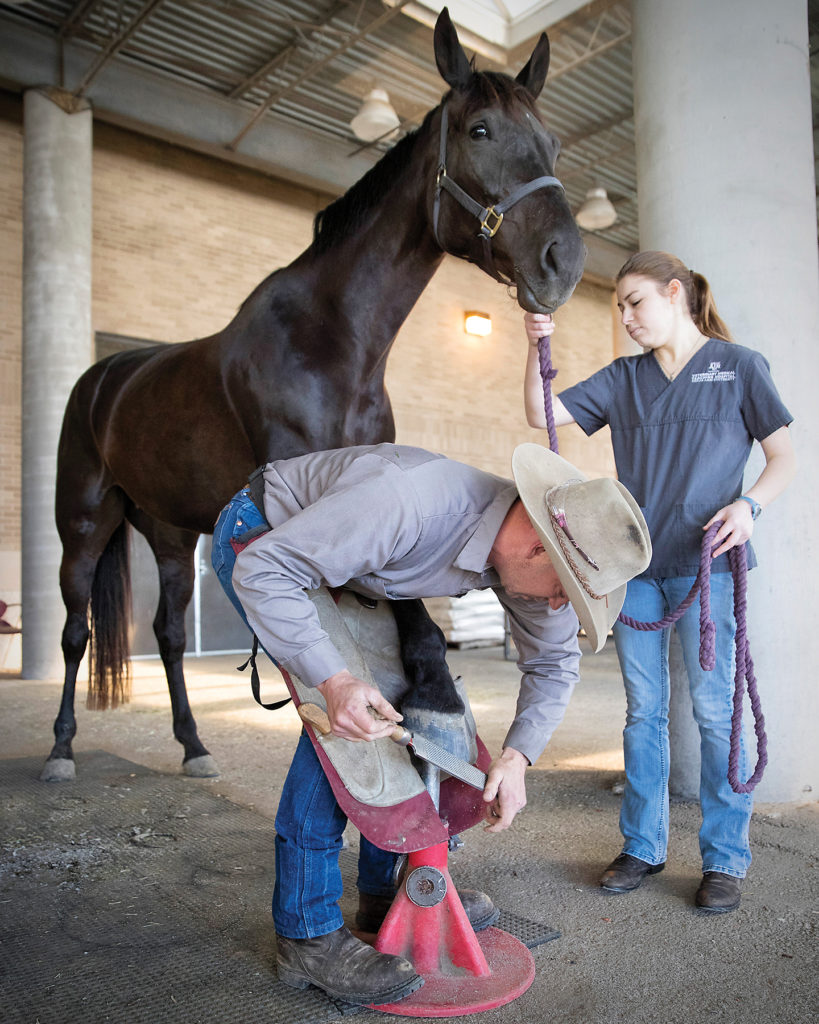Taking The Right Steps: What To Know About Hoof Care

In the equine world, the saying “no hoof, no horse” is well-worn for a reason.
A correct foot care regimen may be the key to keeping a horse happy and trotting, and having a good working relationship with a farrier is essential to solving and preventing common hoof problems.
Jason Maki, a farrier at Texas A&M College of Veterinary Medicine & Biomedical Sciences, stresses that routine hoof care is the best way to ensure a horse’s long-term foot health.
“The hoof is constantly growing. If the amount of growth is too great, hooves may chip, crack, and break,” Maki said. “Also, excessive length increases the strain on the tendons, ligaments, and bones of the hoof and leg. A regular schedule of trimming and shoeing helps minimize these risks.”
Horsing around with their podiatric needs can lead to a variety of health concerns, according to Maki.
“Untrimmed or long hooves are prone to myriad issues,” he said. “Simple capsular issues such as flaring of the hoof capsule, crushing of excessive heel length, cracks, and chips are common.
“Separations within the hoof create a pathway that allows ingress for bacteria and fungus. These infections are commonly called White Line Disease (WLD),” Maki said. “WLD is an erosion of the inner hoof wall by opportunistic fungi. Overgrown hooves can also collapse on themselves and create bruising and abscesses.”
Being proactive about your horse’s hoof care includes both an equine veterinarian and reining in the right farrier services. Finding the perfect fit for your horse can be tricky, considering that farriery is a loosely regulated industry.
“The educational levels of farriers are incredibly diverse,” Maki said. “Finding a farrier who meets your and your horses’ needs is a personal journey, and different horses and owners will have different requirements. Deciding what is important for you and your horse, then seeking someone who meets those needs, would be a good course of action.”
Maki recommends choosing a farrier registered with the American Farriers Association, which offers voluntary certifications with a more comprehensive understanding of the field, from horse anatomy to practical shoe fitting to trimming hooves.
Taking the right steps in equine care requires a consistent regimen of hoof care with the right team of farriers and veterinary specialists. By taking a load off of their horses’ feet, owners are leading their equine companions down a much happier, healthier, and prosperous path.
Pet Talk is a service of the College of Veterinary Medicine & Biomedical Sciences, Texas A&M University. Stories can be viewed on the web at vetmed.tamu.edu/news/pet-talk. Suggestions for future topics may be directed to vmbs-editor@tamu.edu.


